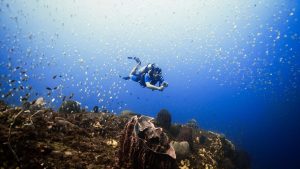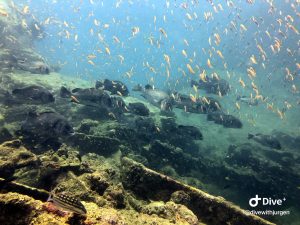Neil Island, a paradise nestled within the Andaman and Nicobar Islands, boasts more than white sands and tropical vibes; it’s a vibrant underwater world teeming with unique marine life. For divers, each dive here is a chance to witness some of the ocean’s most colorful and captivating creatures. In this guide, we’ll introduce you to five must-see marine species you’re likely to encounter. These creatures, from the swift fusiliers to the regal angelfish, bring an array of colors and quirks that will make your dive unforgettable. Plus, you’ll get a bonus look at some rarer encounters—dugongs, stingrays, and moray eels!
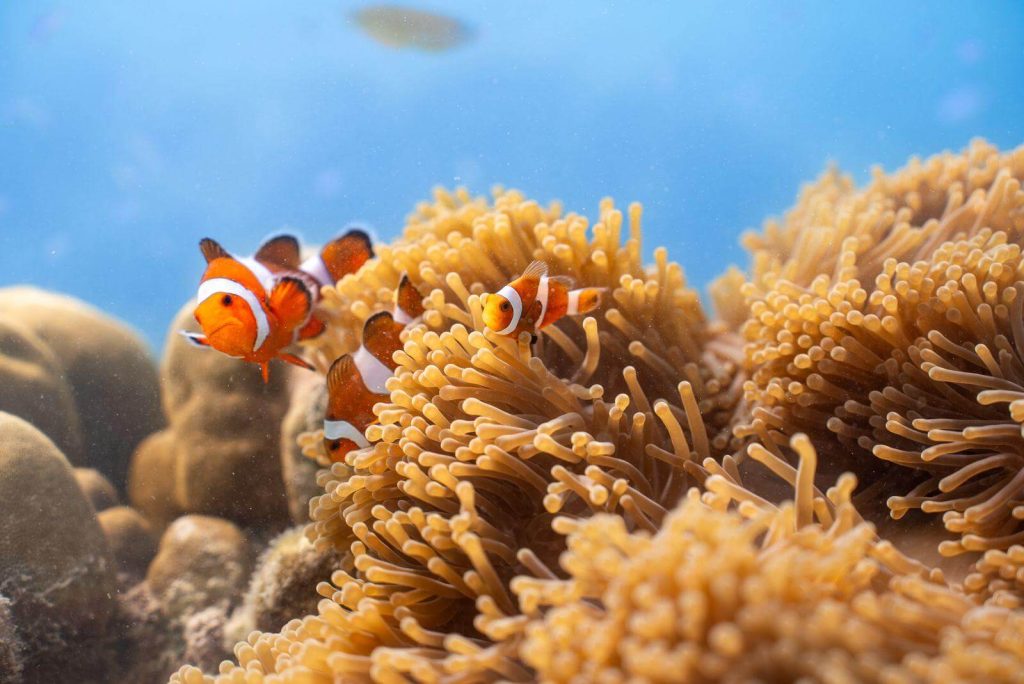
Fusiliers – The Flashing Swimmers
Fusiliers are the high-energy artists of the reef and the humble hosts of all dive sites. These sleek, silver-blue fish can often be seen darting through the water in large, synchronized schools, almost like an underwater light show! With their streamlined bodies and forked tails, fusiliers can zip around in quick bursts, flashing their silver scales as they catch the light. Some species have bright yellow or red fins that make them even more dazzling. While Fusiliers are not currently endangered, overfishing does pose a risk to their populations, particularly in regions with high tourism demand.
Fun Fact: Fusiliers are a favorite prey for larger predatory fish like groupers and snappers, which is why they tend to move in schools—there’s safety in numbers!

Anthias – The Jewel Box of the Reef
Anthias, often called “fairy basslets,” are tiny but breathtakingly colorful fish that seem to live among the clouds of coral. These little jewels are usually bright pink, orange, or purple, creating a soft, mesmerizing glow around the reefs. Females and juveniles are typically smaller and subtler in color, while males flaunt their vivid hues as a sign of dominance. Although anthias are abundant, coral bleaching and habitat destruction are serious threats to their survival, as they depend heavily on coral reefs.
Fun Fact: Anthias are known for their gender-switching ability. When a dominant male dies, the largest female in the group will transform into a male—a fascinating adaptation that keeps the population stable!
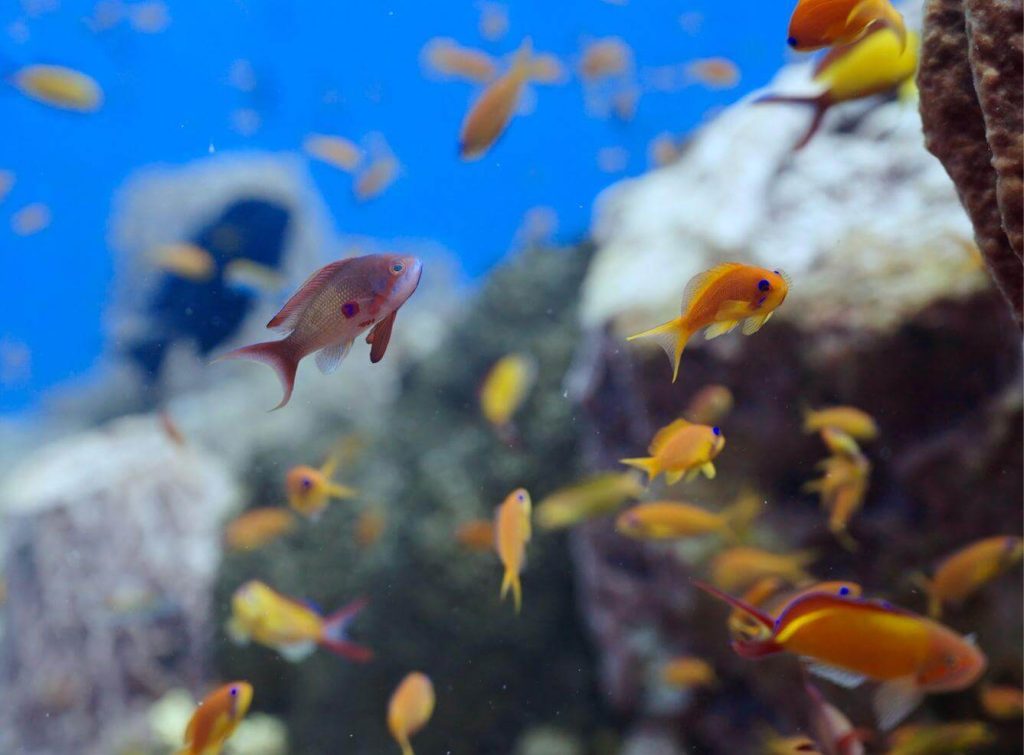
Anemone Fish – Nature’s Underwater Roommates
Popularly known as “Nemo,” anemone fish are beloved for their friendly, playful demeanor and strong bond with sea anemones. These vibrant orange-and-white fish have a unique symbiotic relationship with their anemone homes, where they find protection and food in exchange for warding off anemone predators.
While not endangered, anemone fish populations suffer from the pet trade and habitat loss. Protecting coral reefs is essential for preserving their population.
Fun Fact: Anemone fish are also gender-fluid! They all start life as males, and the dominant one in a pair becomes female—a unique approach to ensure reproduction in their group.
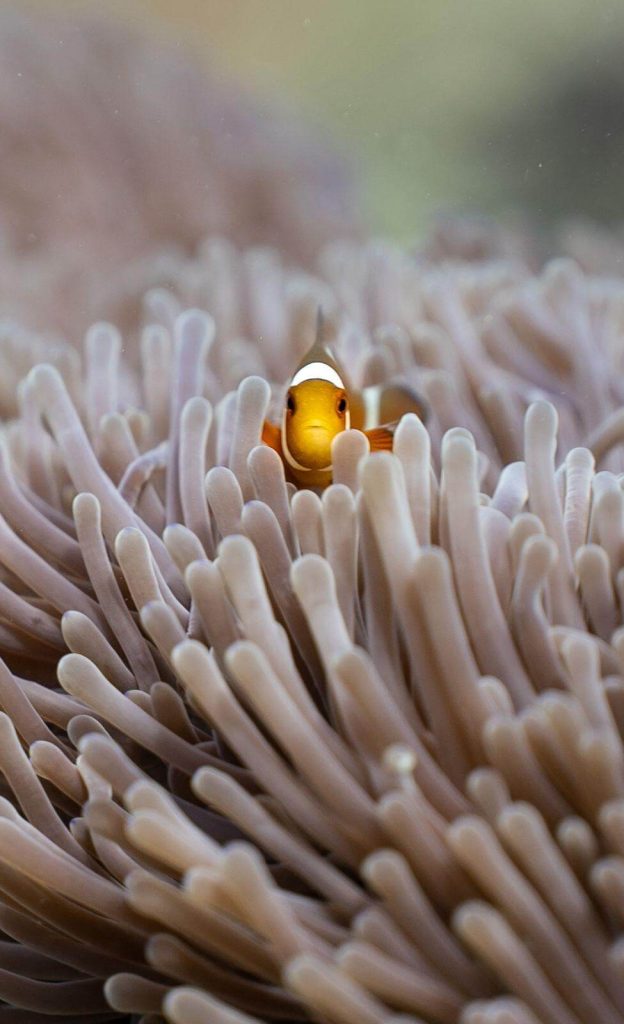
Angel Fish – The Coral Garden Divas
With their bright colors and distinctive body shapes, angel fish are some of the most beautiful creatures in the ocean. These tropical beauties can vary in color from electric blues and yellows to soft purples and oranges. Angelfish are very territorial, often guarding their coral homes fiercely from other fish.
Though not currently endangered, angel fish face risks from habitat loss due to coral reef destruction and climate change.
Fun Fact: Some species of angel fish can live up to 15 years in the wild! They develop distinct “personalities,” with each fish having unique behaviors within its territory.
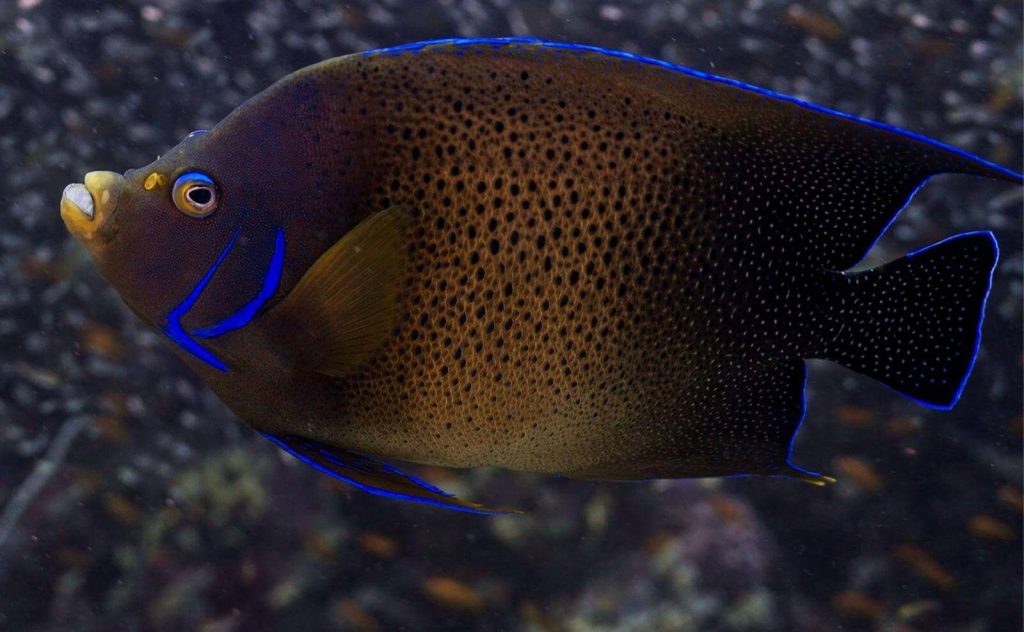
Butterfly Fish – The Reef’s Living Art
Butterfly fish are graceful swimmers and are easily recognized by their distinctive patterns and “false eyes” on their tails. These eyespots help distract predators and give the butterfly fish a better chance to escape. Most species are small but very active, fluttering around coral reefs in pairs, making them one of the most endearing sights underwater. Like many coral-dependent species, butterfly fish are vulnerable to habitat loss. Coral bleaching due to rising ocean temperatures directly threatens their food sources and shelter.
Fun Fact: Butterfly fish form monogamous pairs that last a lifetime! They are often seen swimming together, creating a beautiful ballet around the reefs.
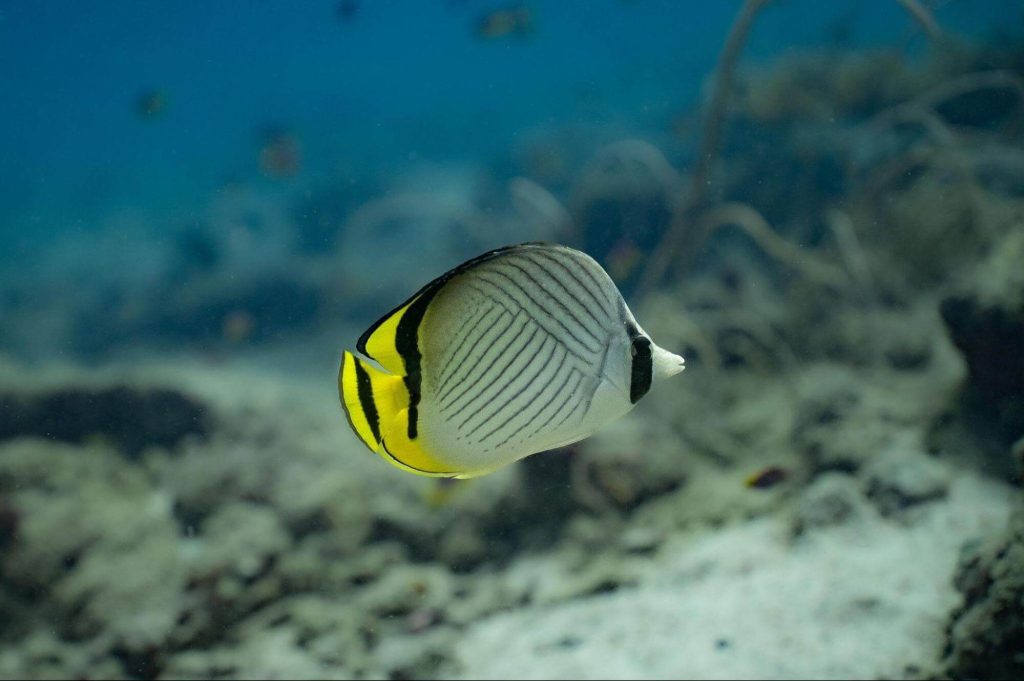
Letting You in on Our Secret: The Hidden Gems of Neil Island
Beyond the colorful characters, Neil Island’s reefs hide some rarer encounters! You may be lucky enough to spot:
- Dugongs – These “sea cows” are shy, gentle creatures that graze on seagrass beds around the island. Dugongs are endangered, so spotting one is an incredible, rare treat.
- Stingrays – Gliding along the seabed, stingrays add a sense of mystery to the dive. Keep a respectful distance—stingrays are usually harmless but can get defensive if disturbed.
- Moray Eels – Known for their curious snake-like movements and sharp teeth, moray eels live within rocky crevices and coral formations. They’re masters of camouflage, often going unnoticed unless you’re very observant!
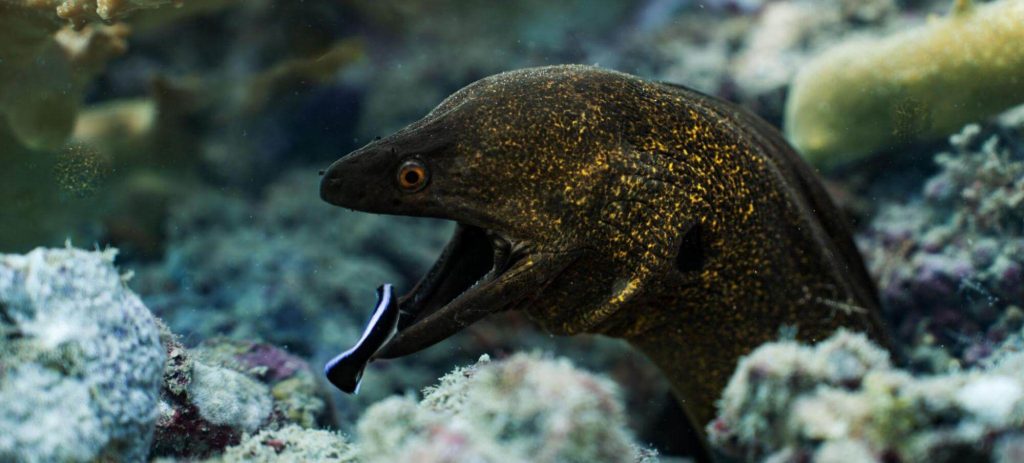
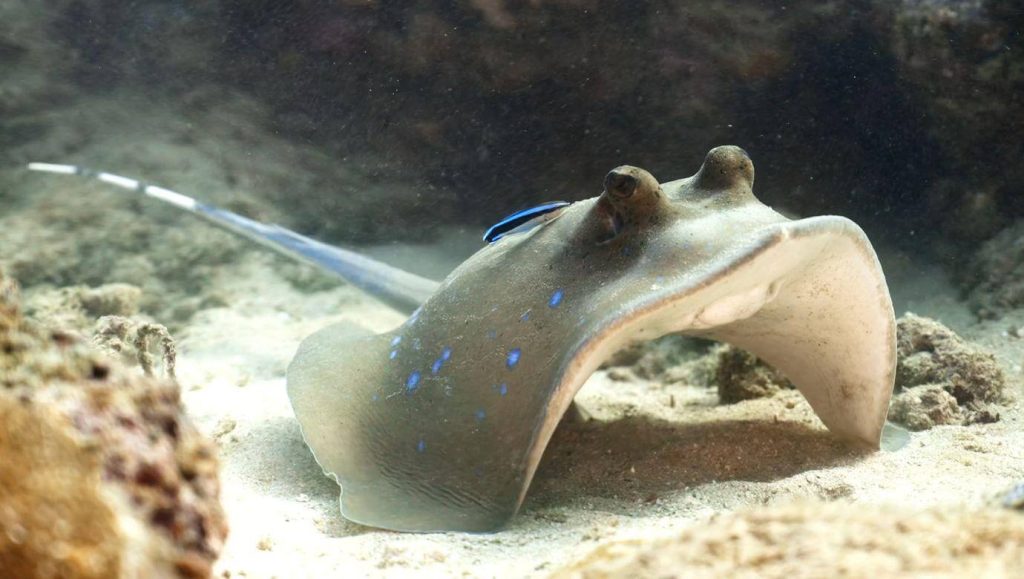
Conserving Neil Island’s Marine Treasures
The delicate ecosystems that support these remarkable species are vulnerable to pollution, overfishing, and climate change. As divers and nature enthusiasts, we can help by adhering to responsible diving practices, supporting sustainable tourism, and advocating for marine protected areas. By minimizing disturbances to reefs and reducing waste, we help ensure these underwater worlds remain vibrant and alive for generations to come. Our conservation collective, Earthsong aims to do just that; rekindle and forge our connection with the infinite universe around us. We need Mother Earth as much as she needs us!
So, as you plan your dive into Neil Island’s marine paradise, remember: the more we respect the ocean, the richer our encounters with its magical inhabitants will be! Dive with curiosity, leave only bubbles, and cherish the beauty beneath the waves. Sign up for our marine ecology courses and dive responsibly!


